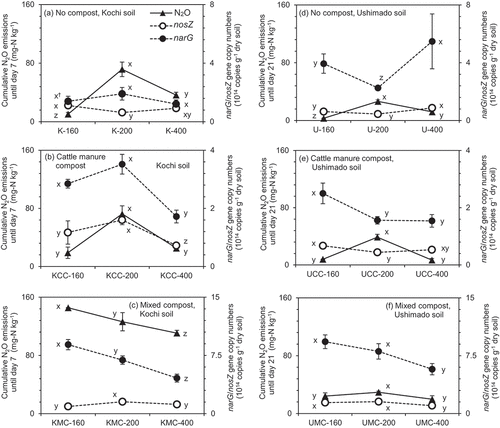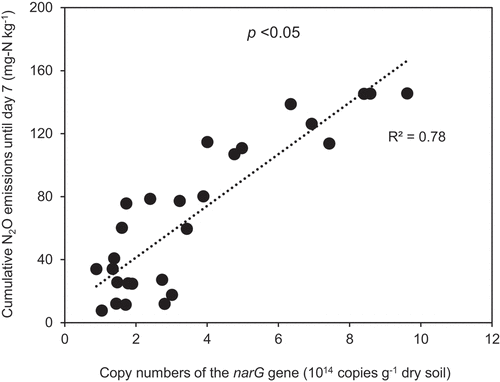Figures & data
Table 1. Initial properties of two types of soil and compost.
Table 2. Cumulative N2O and CO2 emissions in the incubation experiment.
Table 3. Responses of cumulative N2O and CO2 emissions to compost type, soil type, and NH4+-N rates by three-way ANOVA.
Figure 1. N2O emissions in the incubation experiment.The left (a)–(c) show results for Kochi soil (K) and the right (d)–(f) do for Ushimado soil (U). The upper (a) and (d) show results for no compost-, the middle (b) and (e) for cattle manure compost (CC)-, and the lower (c) and (f) for mixed compost (MC)-amended soils. The numbers (160, 200, and 400) indicate NH4+-N application rates to soil (mg-N kg−1). Error bars indicate ± standard deviation (n=3).

Figure 2. CO2 emissions in the incubation experiment.The left (a)–(c) show results for Kochi soil (K) and the right (d)–(f) do for Ushimado soil (U). The upper (a) and (d) show results for no compost-, the middle (b) and (e) for cattle manure compost (CC)-, and the lower (c) and (f) for mixed compost (MC)-amended soils. The numbers (160, 200, and 400) indicate NH4+-N application rates to soil (mg-N kg−1). Error bars indicate ± standard deviation (n=3).
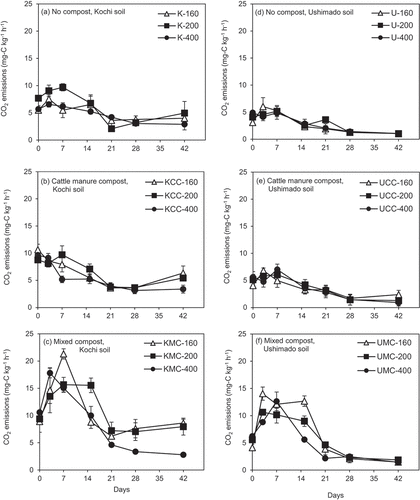
Figure 3. NH4+-N contents in the incubation experiment.The left (a)–(c) show results for Kochi soil (K) and the right (d)–(f) do for Ushimado soil (U). The upper (a) and (d) show results for no compost-, the middle (b) and (e) for cattle manure compost (CC)-, and the lower (c) and (f) for mixed compost (MC)-amended soils. The numbers (160, 200, and 400) indicate NH4+-N application rates to soil (mg-N kg−1). Error bars indicate ± standard deviation (n=3).
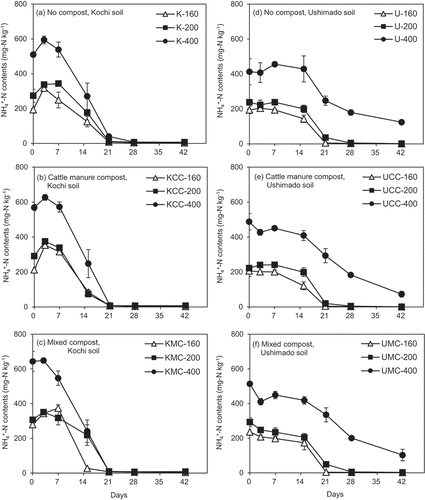
Figure 4. NO3−-N contents in the incubation experiment.The left (a)–(c) show results for Kochi soil (K) and the right (d)–(f) do for Ushimado soil (U). The upper (a) and (d) show results for no compost-, the middle (b) and (e) for cattle manure compost (CC)-, and the lower (c) and (f) for mixed compost (MC)-amended soils. The numbers (160, 200, and 400) indicate NH4+-N application rates to soil (mg-N kg−1). Error bars indicate ± standard deviation (n=3).
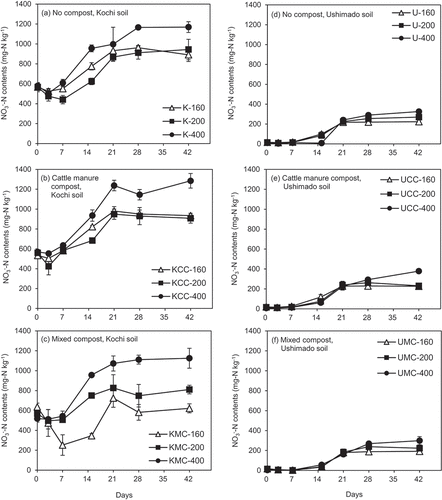
Figure 5. pH (H2O) values in the incubation experiment.The left (a)–(c) show results for Kochi soil (K) and the right (d)–(f) do for Ushimado soil (U). The upper (a) and (d) show results for no compost-, the middle (b) and (e) for cattle manure compost (CC)-, and the lower (c) and (f) for mixed compost (MC)-amended soils. The numbers (160, 200, and 400) indicate NH4+-N application rates to soil (mg-N kg−1). Error bars indicate ± standard deviation (n=3).
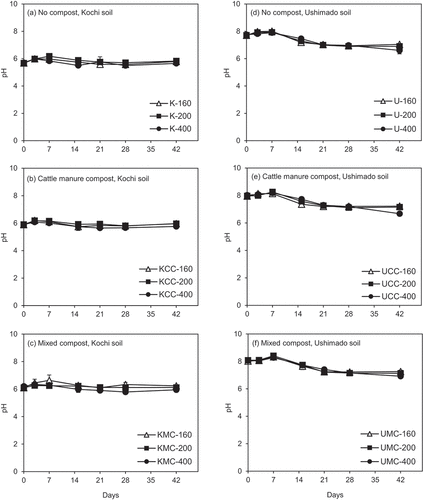
Figure 6. Electrical conductivity values in the incubation experiment.The left (a)–(c) show results for Kochi soil (K) and the right (d)–(f) do for Ushimado soil (U). The upper (a) and (d) show results for no compost-, the middle (b) and (e) for cattle manure compost (CC)-, and the lower (c) and (f) for mixed compost (MC)-amended soils. The numbers (160, 200, and 400) indicate NH4+-N application rates to soil (mg-N kg−1). Error bars indicate ± standard deviation (n=3).

Figure 7. Cumulative N2O emissions until day 7 or 21, narG, and nosZ gene copy numbers in the incubation experiment.The left (a)–(c) show results for Kochi soil (K) and the right (d)–(f) do for Ushimado soil (U). The upper (a) and (d) show results for no compost-, the middle (b) and (e) for cattle manure compost (CC)-, and the lower (c) and (f) for mixed compost (MC)-amended soils. The numbers (160, 200, and 400) indicate NH4+-N application rates to soil (mg-N kg−1). Error bars indicate ± standard deviation (n=3).
